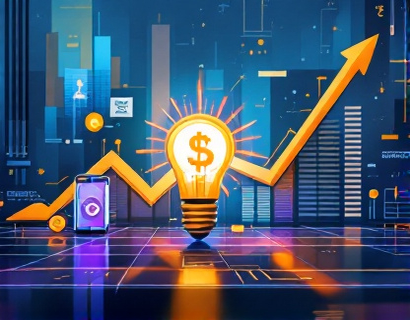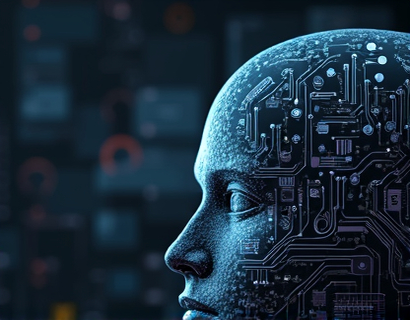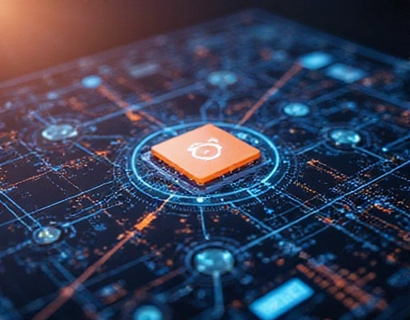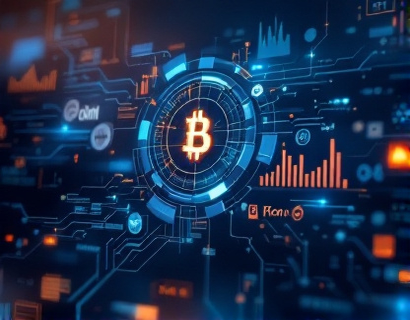Revolutionizing Digital Asset Management: The Power of Decentralized dApps for Cross-Blockchain Conversion
The landscape of blockchain technology is rapidly evolving, with new applications and innovations emerging regularly. One of the most significant challenges in this space is the interoperability between different blockchains. Digital assets created on one blockchain often cannot be directly used on another, necessitating complex and sometimes costly conversion processes. A groundbreaking decentralized application, often referred to as a dApp, is changing this paradigm by streamlining the cross-blockchain conversion of digital assets. This article delves into the intricacies of this revolutionary dApp, highlighting its capabilities, benefits, and the profound impact it has on blockchain professionals and digital asset managers.
Understanding the Need for Cross-Blockchain Asset Conversion
The blockchain ecosystem is fragmented, with numerous platforms each having its own unique features and token standards. This fragmentation leads to a situation where digital assets are often siloed, limiting their utility and value. For instance, an ERC-20 token on Ethereum cannot be directly used on a Binance Smart Chain (BSC) platform without conversion. This limitation not only hampers the fluid movement of assets but also restricts the potential for cross-chain synergies and innovations. The need for a seamless and efficient method to convert digital assets across different blockchains has become increasingly apparent, driving the development of sophisticated dApps like the one discussed here.
Introducing the Decentralized Solution
The decentralized dApp in focus is designed to address the interoperability challenge by providing a user-friendly interface for converting digital assets across multiple blockchains. This platform operates on the principles of decentralization, ensuring that no single entity controls the conversion process. Instead, it leverages a network of nodes and smart contracts to facilitate asset conversion, maintaining transparency and security throughout the process.
Key Features of the Decentralized dApp
- Cross-Chain Compatibility: The dApp supports a wide range of blockchains, including but not limited to Ethereum, Binance Smart Chain, Polkadot, and Solana. Users can convert assets between these and other blockchains with ease.
- Smart Contract Integration: The conversion process is powered by smart contracts, ensuring that the transfer of assets is automated, secure, and tamper-proof.
- User-Friendly Interface: Despite the complexity of cross-chain transactions, the dApp provides an intuitive and straightforward interface, making it accessible to both tech-savvy users and those new to blockchain technology.
- Real-Time Tracking: Users can monitor the status of their asset conversions in real-time, receiving notifications at each stage of the process.
- Cost Efficiency: By eliminating intermediaries and reducing the need for multiple transactions, the dApp offers a cost-effective solution for asset conversion.
How the Decentralized dApp Works
The process of converting digital assets using this decentralized dApp is both efficient and secure. Here’s a step-by-step breakdown of how it functions:
First, the user logs into the dApp and selects the source blockchain and the digital asset they wish to convert. The dApp then identifies the target blockchain and the equivalent token standard for the asset. Next, the user initiates the conversion process, which triggers a series of smart contracts. These smart contracts execute the conversion protocol, ensuring that the asset is transferred from the source blockchain to the target blockchain without any loss of value or functionality.
The entire process is decentralized, meaning that no central authority has control over the conversion. Instead, the network of nodes verifies and validates each transaction, ensuring that the conversion is secure and compliant with the protocols of the involved blockchains. Once the conversion is complete, the user receives the asset on the target blockchain, ready for use.
Security and Trust in Decentralized Transactions
Security is a paramount concern in the blockchain space, and this dApp addresses it through several robust mechanisms. The use of smart contracts ensures that the conversion process is immutable and transparent. Each step of the conversion is recorded on the blockchain, providing a tamper-proof audit trail. Additionally, the decentralized nature of the network reduces the risk of single points of failure, making the system more resilient to attacks and failures.
To further enhance security, the dApp employs advanced cryptographic techniques and multi-signature wallets for asset handling. Users have full control over their private keys, ensuring that only they can authorize transactions. This level of control and transparency builds trust among users, making the dApp a reliable choice for digital asset management.
Benefits for Blockchain Professionals and Digital Asset Managers
The introduction of this decentralized dApp brings numerous advantages for professionals in the blockchain space and digital asset managers. Here are some of the key benefits:
- Increased Efficiency: The automated and streamlined conversion process reduces the time and effort required to move assets between blockchains. This efficiency is crucial for businesses and individuals who need to manage multiple blockchain-based assets.
- Cost Savings: By eliminating intermediaries and reducing the complexity of multi-step transactions, the dApp lowers the overall cost of asset conversion. This makes it an attractive solution for both small-scale users and large institutions.
- Enhanced Interoperability: The ability to seamlessly convert assets across different blockchains fosters greater interoperability, enabling new use cases and applications. This interoperability is essential for the growth and adoption of blockchain technology across various industries.
- Greater Flexibility: Users gain the flexibility to choose the most suitable blockchain for their specific needs, without being constrained by the limitations of a single ecosystem. This flexibility is particularly valuable for decentralized finance (DeFi) applications and cross-chain protocols.
- Innovation Catalyst: The dApp serves as a catalyst for innovation, encouraging developers to build new applications and services that leverage cross-chain asset conversion. This can lead to a more vibrant and dynamic blockchain ecosystem.
Case Studies and Real-World Applications
To better understand the practical implications of this decentralized dApp, let’s explore a few real-world scenarios where it can make a significant difference:
Consider a decentralized finance (DeFi) platform that operates on Ethereum but needs to integrate with a lending protocol on Binance Smart Chain. Traditionally, this would require manual conversion of tokens, involving multiple steps and potential risks. With the decentralized dApp, the platform can automatically convert its Ethereum-based tokens to the equivalent BSC tokens, ensuring a smooth and secure integration process.
Another example is a cross-border payment service that uses stablecoins on different blockchains. The service can use the dApp to convert stablecoins from one blockchain to another without losing value or facing high transaction fees. This not only improves the efficiency of the service but also enhances the user experience by providing faster and more reliable cross-border transactions.
Future Prospects and Developments
The future of cross-blockchain asset conversion looks promising, with several developments on the horizon. One area of focus is the standardization of token standards across different blockchains, which would further simplify the conversion process. Projects like Polkadot and Cosmos are already working towards creating interoperable blockchain networks, and the decentralized dApp can play a crucial role in these ecosystems.
Additionally, the integration of this dApp with emerging technologies such as layer 2 solutions and sidechains can enhance its performance and scalability. As more blockchains adopt interoperability protocols, the need for such a dApp will only grow, solidifying its position as a key player in the blockchain industry.
Conclusion
The decentralized dApp for cross-blockchain digital asset conversion represents a significant leap forward in blockchain technology. By addressing the interoperability challenge, it offers a seamless, secure, and efficient solution for managing digital assets across different blockchains. For blockchain professionals and digital asset managers, this dApp is not just a tool but a game-changer that enhances efficiency, reduces costs, and opens up new possibilities for innovation. As the blockchain ecosystem continues to evolve, solutions like this will be instrumental in shaping its future.











































